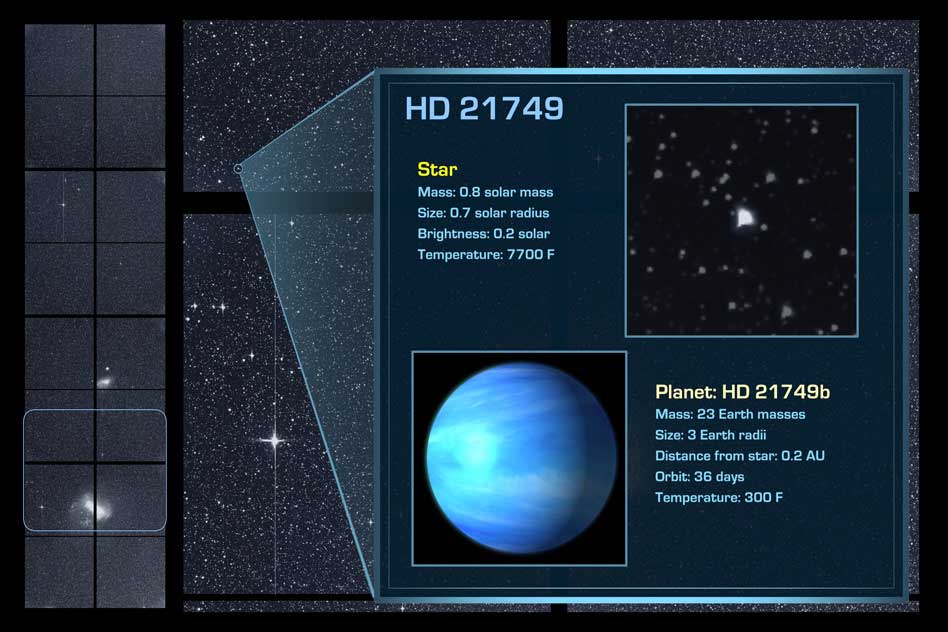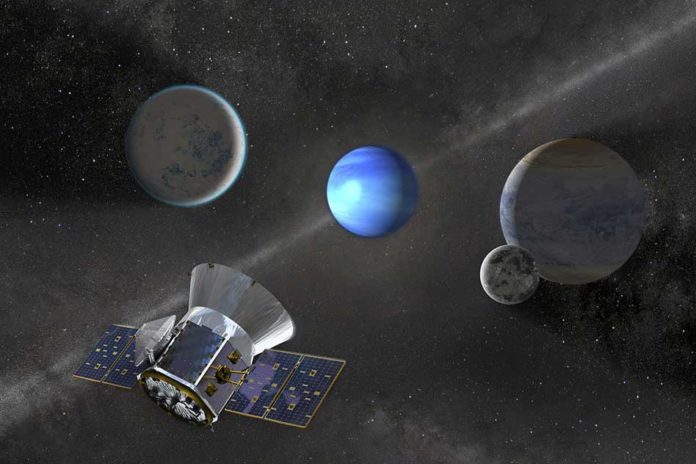Using NASA’s Transiting Exoplanet Survey Satellite, scientists have discovered third small planet outside our solar system. Dubbed as HD 21749b, the planet orbits a bright, nearby dwarf star about 53 light years away, in the constellation Reticulum.
The planet is about three times the size of Earth. Surprisingly, it is also a whopping 23 times as massive as the Earth. But it is unlikely that the planet is rocky and therefore habitable; it’s more likely made of gas, of a kind that is much denser than the atmospheres of either Neptune or Uranus.
According to scientists, it has the longest orbital period of the three planets. The planet orbits its star in a relatively leisurely 36 days, compared to the two other planets — Pi Mensae b, a “super-Earth” with a 6.3-day orbit, and LHS 3844b, a rocky world that speeds around its star in just 11 hours.
Diana Dragomir, a postdoc in MIT’s Kavli Institute for Astrophysics and Space Research said, “It’s the coolest small planet that we know of around a star this bright. We know a lot about atmospheres of hot planets, but because it’s very hard to find small planets that orbit farther from their stars, and are therefore cooler, we haven’t been able to learn much about these smaller, cooler planets. But here we were lucky, and caught this one, and can now study it in more detail.”

Image: NASA/MIT/TESS
“We think this planet wouldn’t be as gaseous as Neptune or Uranus, which are mostly hydrogen and really puffy. The planet likely has a density of water or a thick atmosphere.”
The star is relatively active, thus scientists were unsure if the single transit they spotted was a result of a passing planet or a blip in stellar activity. They thus took help of High Accuracy Radial velocity Planet Searcher, or HARPS, a high-precision spectrograph installed on a large ground-based telescope in Chile, which identifies exoplanets by their gravitational tug on their host stars.
Scientists found a repeating signal emanating from HD 21749 every 36 days.
Dragomir said, “Because there was an interruption in data around that time, we initially didn’t see a second transit, and were pretty disappointed. But we re-extracted the data and zoomed in to look more carefully, and found what looked like the end of the transit.”
“There was quite some detective work involved, and the right people were there at the right time. But we were lucky and we caught the signals, and they were really clear.”
Scientists have submitted a paper to Astrophysical Journal Letters.
